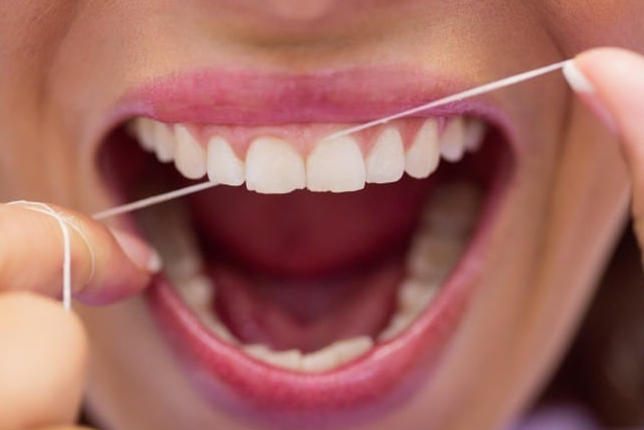Maintaining gum and tooth health requires flossing. However, if you don’t use the right technique, you may do more harm than good.
The Centers for Disease Control and Prevention recommends flossing every day if you want to prevent gum disease. Flossing twice a day is recommended by some dentists. Cavities, gum disease, and bad breath are all caused by bacteria in our mouth and teeth.
We constantly introduce bacteria and waste materials between our gums when we eat three meals a day, so removing these impurities on a daily basis will keep our mouth healthy.

When you floss, you don’t do it at the right time
Flossing is an integral part of oral hygiene because brushing alone does not remove all food particles and plaque.” The amount of saliva decreases during the night, so the food left on the teeth increases. In order to remove bacteria and food particles from your mouth before you go to sleep, you should use dental floss. This will prevent bacterial decomposition or gingivitis.”
Flossing and brushing your teeth are not done in the correct order
You are doing your best if you floss before brushing. The fluoride in the toothpaste will penetrate better between the pores if we floss before brushing. By using this type of coating, the surfaces between the teeth are kept clean and protected.
There is a problem with the dental floss you are using
It is important to find the right floss for your teeth in order to properly clean your gums and teeth. According to the manufacturer, the effectiveness of dental floss depends on interdental space, tooth restoration, and periodontal disease.
You should use thinner floss if you have little space between your teeth, and thicker floss if you have more space between your teeth and periodontal disease.
The floss you use is very short
Your work will be difficult if you hold a very short thread. The use of short dental floss makes accessing the back teeth more difficult and discourages patients from cleaning them.”
The floss should also be able to be wrapped around your finger so that you can use a clean part to clean each tooth. Wrap a 45cm length of floss around your finger, open it, and brush your teeth.
The entire tooth is not cleaned
The floss should be used on both sides of the tooth, not just between them. Make sure to clean the back of the tooth as well by wrapping the floss around the tooth in a C shape and pulling it up and down.
Your gums are being damaged
Excessive aggression damages the gums and causes them to crack. Pull the floss up between the teeth rather than pushing it down. To prevent damage to the gum tissue, you should pull the thread gently and softly.
The thread should be placed above the gum line
If you only floss between your teeth, you will not achieve your goal. Instead, you should bring the floss two to three millimeters beneath the gum line to kill bacteria.
In order to dislodge plaque, bacteria, and food particles that may have accumulated under the gum line, gently floss up and down and under the gum line.
When you see blood, you stop flossing
Most people stop flossing when they see blood.” In fact, bleeding indicates healthy gums, and you just need to floss more often and with a better form.” Seeing blood is not an emergency.
When flossing, infected gum tissue bleeds, which shows the tissue is irritated. The bleeding will disappear with time. Check with your dentist if the bleeding is dangerous. However, seeing blood does not mean you shouldn’t floss.
Flossing is important
Regular flossing prevents gum disease more than keeping your smile line white. Your dentist is right: flossing is crucial.
Researchers have linked bacteria between the teeth with gum diseases (periodontitis) and more likely to suffer from cancer, stroke, heart disease, Alzheimer’s, etc. if you do not use dental floss. Despite this, only a small percentage of adults use dental floss every day.


